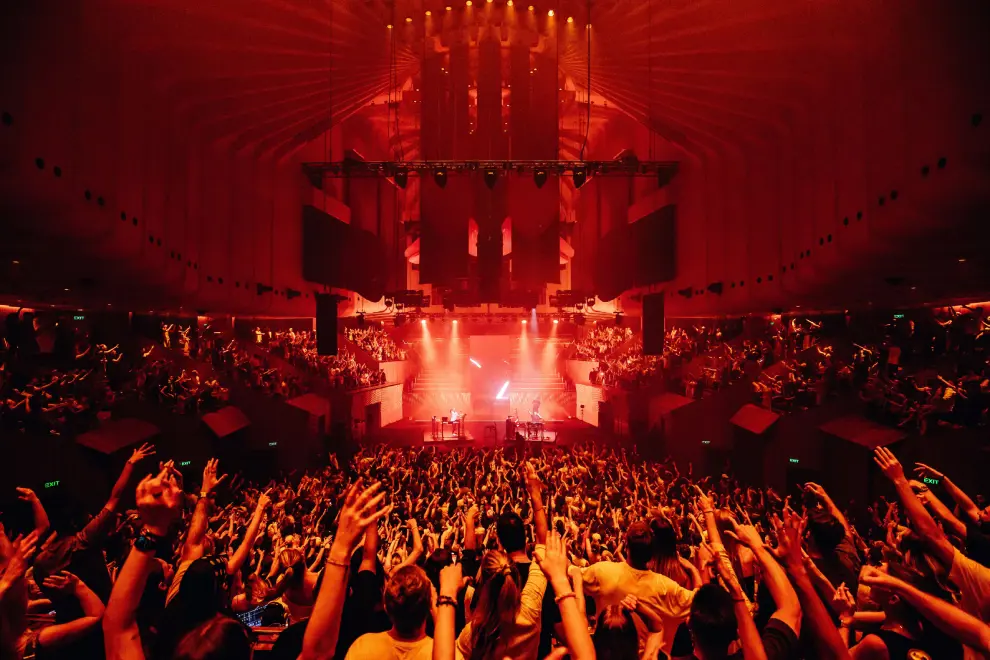 Australia
AustraliaThe global Electronic Dance Music (EDM) sector has bounced back so strongly from its COVID-19 woes that it is now worth US$11.8 billion (AU$18.07 billion).
It has become more entrenched in the mainstream than ever before, with a new generation of EDM followers, particularly from South Africa, Mexico, India, and Brazil.
“It was illustrating the growing cultural footprint of electronic music culture and its vibrant global scene,” says Mark Mulligan, Managing Director and chief analyst of London-based MIDiA Research, which presented the 10th IMS Business Report 2024 this week at the IMS Ibiza summit.
Australia is ranked the third biggest EDM market, as determined by Spotify followers, with Germany at the top, followed by the United States.
The report notes that Australia is a standout because it has ten times more electronic music listeners than its entire population.
The United Kingdom is in fourth place, followed by Brazil, India, Mexico, South Africa, Canada, and France.
The report also highlights South Africa because it has nearly twice as many electronic listeners as people, which "reflect the degree to which South Africa has built its own electronic scenes and culture.”
Growth Rate
After its 34 per cent bounce-back in 2022 to $11.3 billion (AU$17.2 billion) due to pent-up demand, EDM executives stressed that that was just a one-off.
But last year, it grew a further 17 per cent, “This is not just about bouncing back; this is bouncing back and almost bouncing off the trampoline,” Mulligan remarks.
There is significant growth, particularly across festivals/clubs, recordings and publishing. In 2019, the global dance industry was valued at $8.7 billion (AU$13.3 billion).
IMS co-founder Ben Turner makes two significant points. “The new report reflects how deeply electronic music is now integrated into mainstream culture – from festivals to films, finance to fashion – with the genre now ever-present in society.
“We had shifted from segregated stages or one-off moments to an always-on culture that is hard to get away from!”
He also notes: “The pent-up demand experienced in 2022 is also reflective of a new generation coming through who are proving to be passionate, loyal, and keen to experience everything possible.”
Here are eleven takeaways from the report.
Festivals & Clubs Dominate Revenues
Festivals and clubs continue to dominate revenues, making up nearly half of the industry total. This is due to pent-up demand for live events after the pandemic lock-ins.
Mulligan warns executives and fans should “not expect this sort of growth to happen next year and the year on” but acknowledges this sector will “remain bigger and more established than it was before.”
Hardware & Software In Second Place
Music hardware and software are the next biggest segment, with around a quarter of total and considered “a long term growth area” in EDM. The production and DJing space together generates $108 million (AU$165.9 million).
Recorded Music Grows 10 Per Cent
After a slower 2022, EDM’s global recorded music market returned to strong growth in 2023, up 10 per cent to $31.2 billion (AU$47.2 billion). This is despite the cost of living and geopolitical concerns, Mulligan said.
Streaming is the biggest segment at $21.9 billion (AU$33.6 billion) with a 10 per cent growth.
Physical is worth $4.4 billion (AU$6.7 billion), digital brings in $1.1 billion (AU$1.6 billion) and “others” including licensing and expanded rights are worth $5.7 billion (AU$8.7 billion).
Spotify Tops EDM Streaming
As with other kinds of music, in countries like Australia, Spotify has the biggest market share, at 30.5 per cent, translating to 187.8 million subscribers.
Apple Music is at 13.7 per cent (84.7 million subscribers) and Tencent Music at 13.4 per cent (82.7 million subscribers) beat Amazon Music to third place.
Currently, Spotify’s three largest markets are the United States, Germany, and the United Kingdom. But MIDiA research finds emerging markets are fast catching up. China leads the growth, followed by India, Indonesia, and Thailand.
“In the past, in the traditional recorded music business, revenues were big, and people had good amounts of money to spend [on] CDs or vinyl… so as a consequence, the richest nations were the ones that shaped the music business,” Mulligan points out.
TikTok Will Be EDM Revenue’s Future
EDM has a very strong presence on TikTok, with the IMS Business Report calling it “the central place for fan engagement.”
As of March 23, average daily video creations hashtagged with #ElectronicMusic rose by 113 per cent since June 2022 and amassed 5.9 billion global views.
MIDiA predicts that TikTok – along with Twitch and Matter – will be major contributors to EDM revenue in the future.
EDM Versus Hip Hop
In terms of social media growth, EDM outperforms Hip Hop on TikTok by a rate of 21 per cent to 2 per cent and on Instagram at a rate of 19 per cent to 15 per cent.
However, Hip Hop takes the lead in streaming follower growth on Spotify (24 per cent to 13 per cent) and YouTube (11 per cent to 9 per cent).
EDM has passed Rock on YouTube, Instagram, and TikTok and is getting closer to the stream counts of Latin and Rock.
Gender Gap Still Of Concern
In a survey of members of the Association For Electronic Music and IMS delegates, 82 per cent of respondents thought the industry was doing well on gender issues, such as diversity of lineups and employees.
But as the report shows, women and gender-expansive creators complain of being treated differently, which prevents them from reaching their potential.
33 per cent say they were passed over for opportunities compared to 20 per cent of those identifying as male, 30 per have their career experience questioned (versus 13 per cent) and 27 per cent discover a pay gap (versus 16 per cent).
23 per cent are dismissed or interrupted at meetings (versus 6 per cent), 22 per cent feel excluded from meetings (versus 13 per cent), and 23 find their work judged unfairly or to higher standards (versus 14 per cent).
Where EDM Is Discovered
More EDM is discovered on YouTube, accounting for 52 per cent, while 46 per cent of across-the-board consumers attribute it to where they get their latest grooves.
It is pretty close on radio (32 per cent versus 33 per cent), streaming (31 per cent to 28 per cent), social media (26 per cent to 24 per cent), TV, film & games (26 per cent to 25 per cent) and TikTok (24 per cent to 29 per cent).
Tech House Remains Most Popular
Tech House remains the most downloaded sub-genre on Beatport, with Afro House shooting up from 18th spot in the first quarter of 2022 to Number 9 in the third quarter of 2023. The Beatport list is as follows:
Tech House
House
Techno (peak/driving)
Melodic House & Techno
Drum & Bass
Dance/Electro Pop
Deep House
Minimal/Deep Tech
Progressive House
Afro House
Indies Increase Market Share
EDM indies hike up their market share for the fourth consecutive quarter, up 17 per cent to reach a 31 per cent market share, “hinting at a newer generation of independent future-focused labels” like HYBY and Believe.
The report states, “HYBE and Believe grew the fastest, representing the spearhead of a new generation of record labels that pursue revenue streams closely aligned with the dynamics of today’s fan—and creator-centered music business.”
Major label share was up by 7 per cent in 2023.
Publishing Outpaced Recording
Revenue from publishing grew more than two times faster than that of recorded music despite a slowdown in catalogue acquisitions due to rising interest rates.
This was due to better earning rates for publishers and songwriters.









